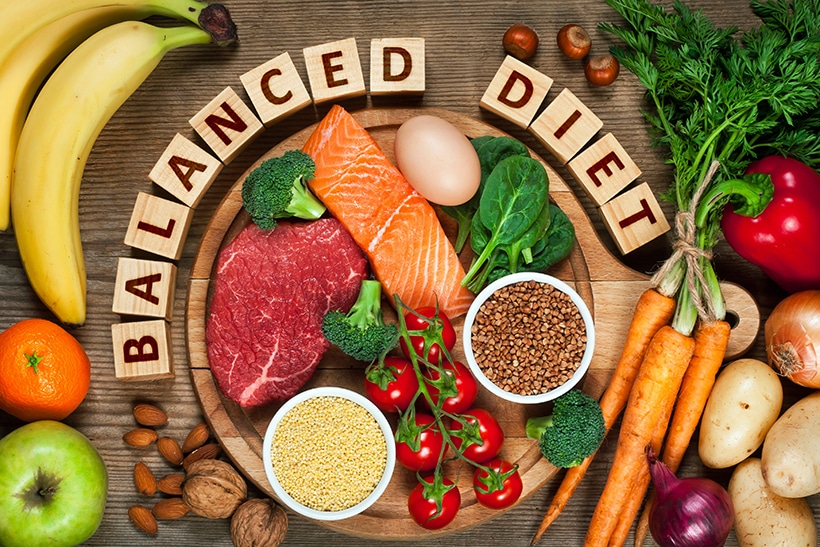Importance of Fruits and Vegetables in Human Nutrition
In general, a diet rich in fruits and vegetables is important because of the different nutrients they provide. Studies have shown that people who eat more produce have less heart disease, stroke and high blood pressure.
It is recommended to consume at least five portions of a variety of fruits and vegetables daily. One portion is roughly 80g, which could be half a grapefruit or two satsumas.
Vitamins
A wide variety of vitamins are contained in fruits and vegetables, particularly vitamin A and C. They also contain a number of minerals and dietary fiber. Historically, diets rich in fruits and vegetables have been recommended for their health-promoting properties. This is because fruits and vegetables are low in fat, but are high in vitamins and minerals. Many fruits and vegetables also contain phytochemicals, which have been shown to offer protection against certain chronic diseases, such as heart disease, cancer and diabetes.
The difference between fruits and vegetables is sometimes controversial. The definition of a fruit includes any seed-bearing structure that develops from the ovary of a flowering plant. This means that tomatoes, eggplants, peppers and rose hips are technically fruits even though we think of them as vegetables. Vegetables, on the other hand, include any part of a plant that isn’t a fruit, including leaves (spinach, lettuce), stems and roots (carrots, beets, turnips) and bulbs (onions).
Food frequency instruments are used in epidemiologic studies to collect dietary data on fruits and vegetables, but the precise definition of what constitutes a serving of each differs between research groups and this can limit the accuracy of estimates of intake. In general, a serving of fruits and vegetables is defined as a half cup or a full cup of raw, cooked or canned fruits and vegetables.
Minerals
Unlike vitamins, minerals cannot be synthesized in the body, so they must be provided through diet. Minerals can be divided into two categories: macrominerals and microminerals (also called trace elements). The human body requires macrominerals in large quantities to function properly, and these are found mostly in meat and dairy foods. These include calcium, which helps form and maintain bones, phosphorous, which is part of bone and DNA and is necessary for enzyme reactions in muscle and blood vessels, and magnesium, which assists with over 300 enzyme reactions, including the regulation of blood pressure.
Generally, our bodies are capable of obtaining adequate amounts of these minerals through a balanced diet, although certain groups of people may be at risk for deficiency. These include chronically ill people, older adults and women who are pregnant or breastfeeding.
Fruits and vegetables contain a cocktail of vitamins, minerals and fiber that promotes health and can decrease the risk for some chronic diseases, such as heart disease, Type 2 diabetes and high blood pressure. A diet rich in fruits and vegetables can also lower calories and help people control their weight. This can be particularly important for those with metabolic syndrome, a combination of traits that increases the risk of developing cardiovascular disease, obesity and diabetes. Various studies have linked increased consumption of fruits and vegetables with lower risk of these diseases.
Fiber
Fruits and vegetables contain a combination of carbohydrates and fiber. Most fruits and vegetables are low in fat. Those that are high in fat, such as nuts and seeds, also provide fiber. Most people do not get enough fiber in their diets. A high intake of dietary fiber can help to reduce cholesterol and blood sugar levels. Dietary fiber is found in a wide variety of foods, including whole grains, beans and peas, fruits, and vegetables.
Although botanists use the part of the plant from which it grows to determine whether something is a fruit or a vegetable, chefs and food manufacturers often use flavor profiles as criteria for classifying a food. For example, the tomato grows from a flower and has seeds, which technically makes it a fruit, but many consider tomatoes to be vegetables because of their savory flavor. The USDA’s central nutrient database lists only total fiber, not soluble or insoluble, and dietary data from epidemiologic studies are limited by disagreement on what constitutes a serving.
A recent national nutrition survey found that only 12.2% of Americans eat the recommended amount of fruit and 8.3% eat the recommended amount of vegetables. Adding more fruits and vegetables to meals can increase consumption, as can replacing juices with whole fruits or eating a salad for lunch or dinner each day. Keeping ready-to-eat washed produce in your refrigerator or on the counter can encourage you to reach for healthy snacks. Eating meals with others also increases the likelihood of consuming more of the 5 food groups and less discretionary choices.
Phytochemicals
Many fruits, vegetables, legumes, whole grains and herbs have a wide range of phytochemicals. These are chemical compounds that are produced by plants and have been shown to have a positive impact on human health, beyond those conferred by their vitamin and mineral content. They also help provide the color, flavor and aroma of plant foods.
Phytochemicals are believed to have antioxidant properties, which protect cells by neutralizing free radicals. This is important, because free radicals are unstable molecules that can damage cell components such as proteins and DNA. Those with the highest levels of oxidative stress are at greater risk for a number of diseases including cardiovascular disease, cancer and neurodegenerative disorders such as Alzheimer’s and Parkinson’s.
The best way to get more phytochemicals is to eat a variety of fruits and vegetables, trying to fill half your plate at each meal. This will give you a good mix of the different colors, which represents the many phytochemicals found in them. Observational studies have linked eating these colorful foods to lower rates of heart disease, some cancers, eye disease and other conditions. Although, clinical trials of individual phytochemicals are limited and have mixed results, the overall evidence indicates that consuming a diet high in fruits and vegetables is important to promote optimal health.







